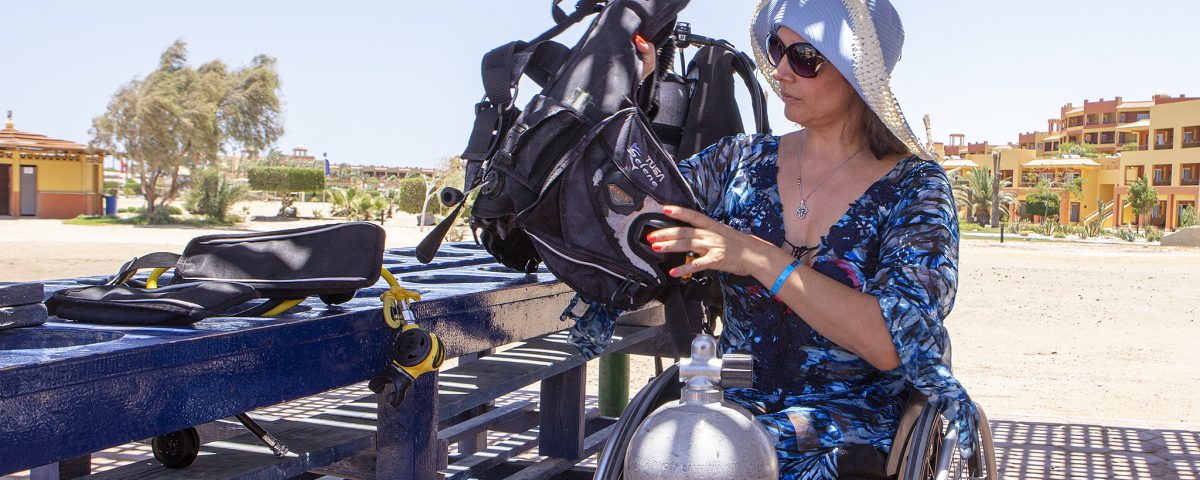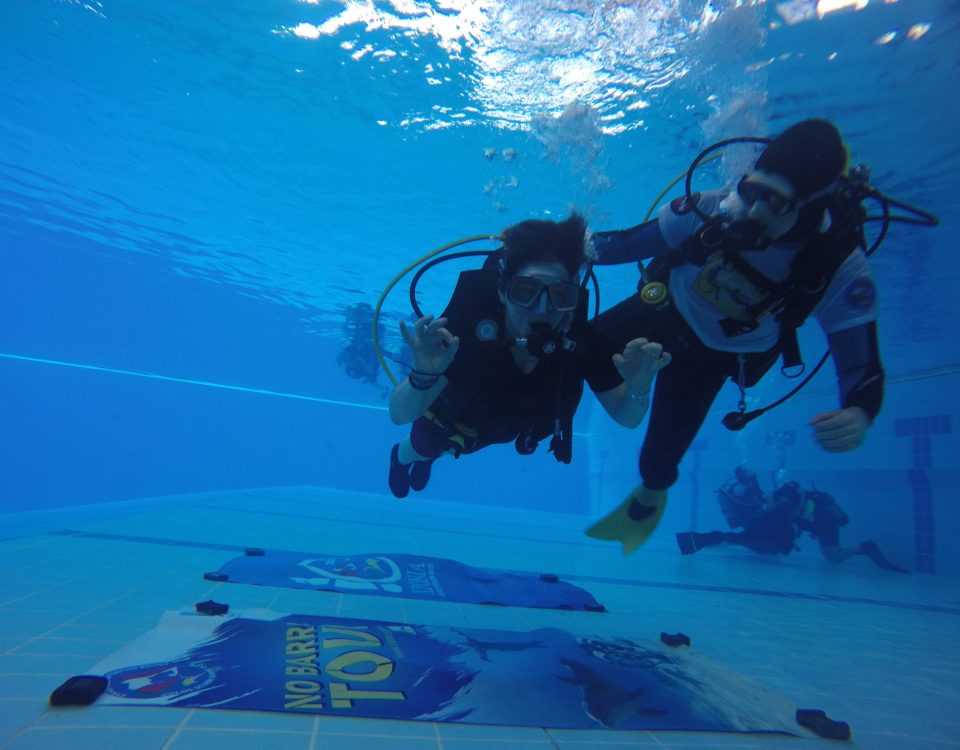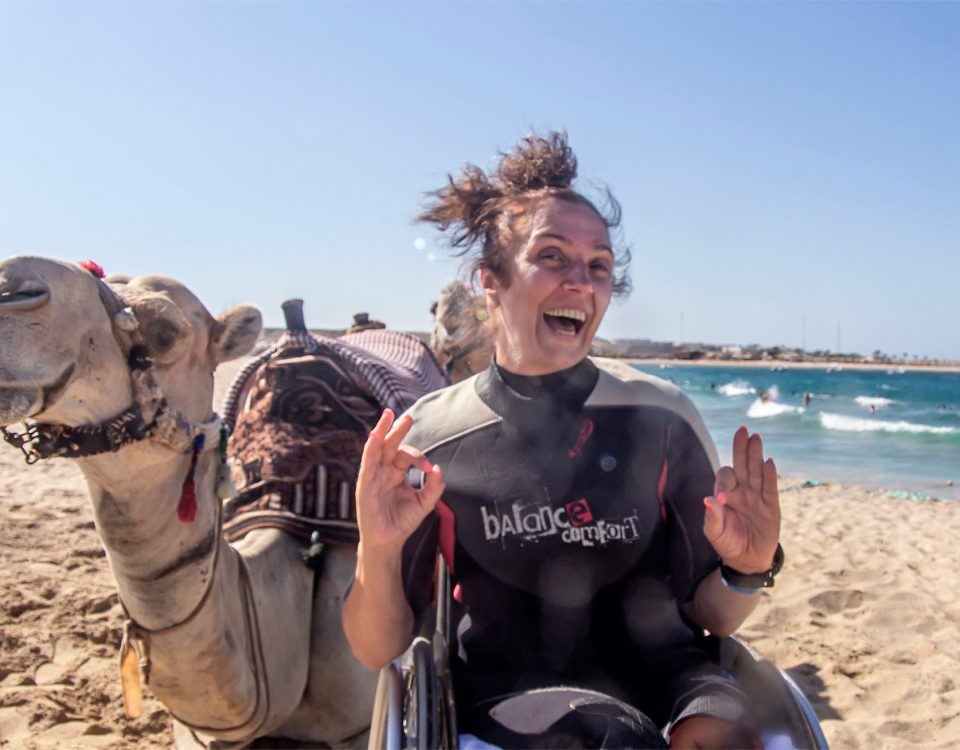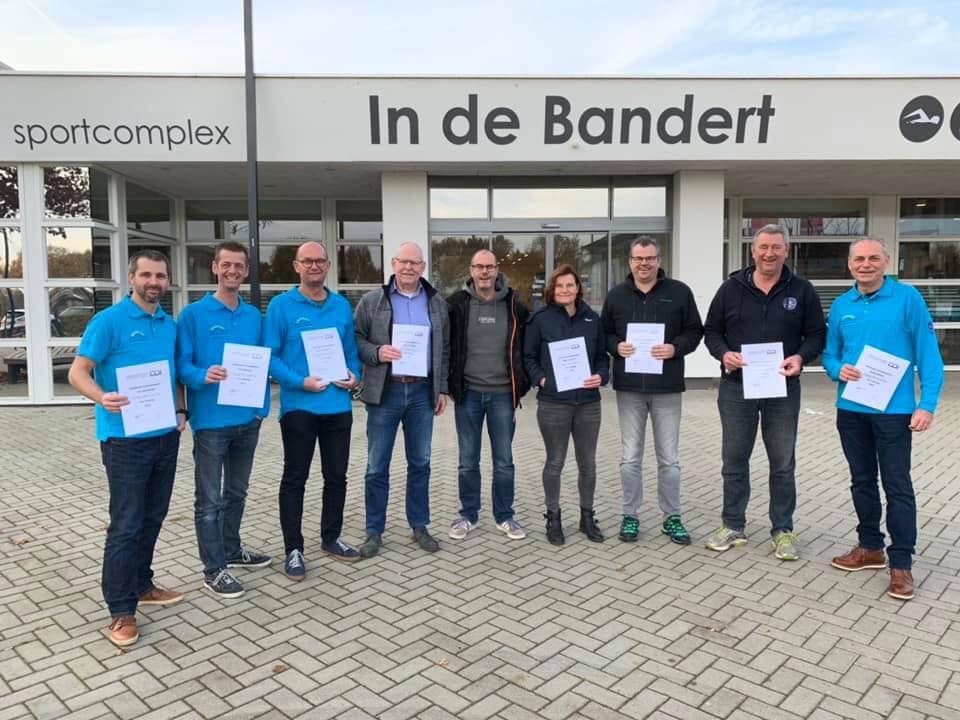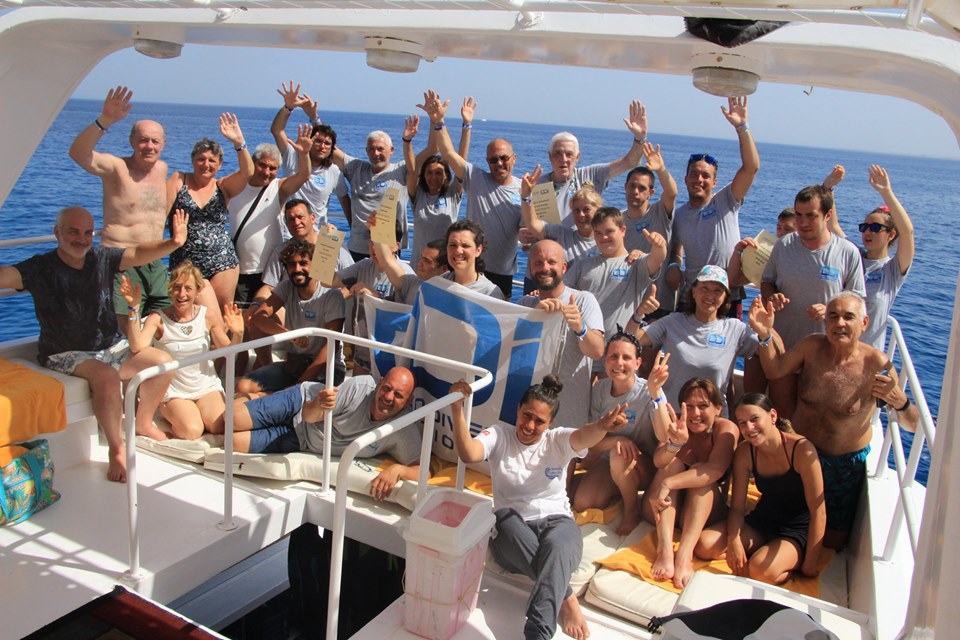
All Aboard!
June 24, 2019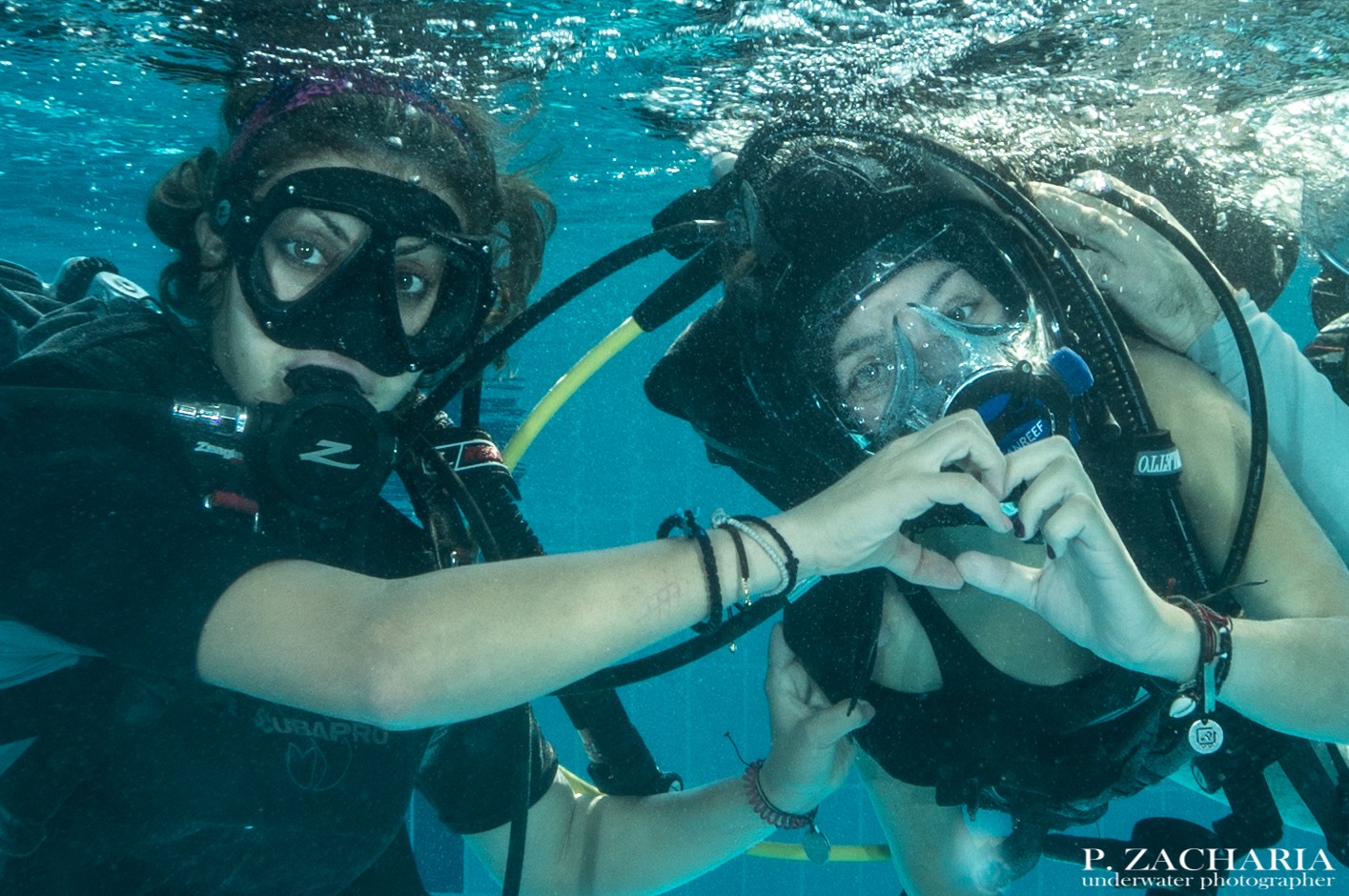
No Barrier Tour 2019 Cyprus
November 6, 2019Adapt your Diver
Quite often, especially during our Pro courses, we get asked about specific equipment modifications. It is safe to say that our Pro students know the differences between a wing or jacket BCD or the differences between one lens or two lens masks, but what about equipment that best adapts to the physically or mentally disabled?
In our training manuals and during our courses we talk about modifications and differences in equipment; however, we thought we would bring the knowledge to a more wider audience. This article is based upon personal opinions and experiences. Whether you are a Pro or a recreational diver, here is a few things to consider when it comes to specialised equipment.
For the Paraplegic Diver
Every disability is different, the injury is different and therefore the equipment is personal to each individual. For the Paraplegic diver, one of the most useful pieces of equipment for the majority of spinal injury divers is webbed gloves. Webbed gloves help the diver propel through the water, designed to increase water resistance and to create drag. As well as being used by disabled divers, webbed gloves are also used by surfers and swimmers alike. Due to the extra force that is exerted on the swimmer/diver/surfer, webbed gloves are fantastic for strength and endurance training. The extra effort needed to counteract the resistance created by the gloves helps build strength, giving the upper body, shoulders and arms a good workout.
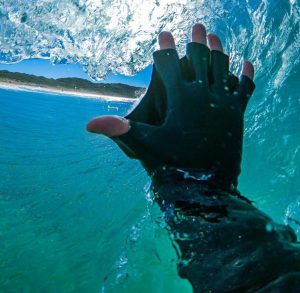
![]() Best I’ve used in my years as a dive pro
Best I’ve used in my years as a dive pro ![]() {Mark Slingo DDI Instructor Trainer Examiner and DDI Boardmember}
{Mark Slingo DDI Instructor Trainer Examiner and DDI Boardmember}
Darkfin is a company that designs different type of performance gloves for different sports. Due to their specialty and niche in the market you can find up to 12 different hand sizes so having ill fitted webbed gloves is no excuse with these guys! If global sustainability hits a bit of a sore spot with you then you will love this brand. Darkfin gloves are made out of plant based materials and are 100%biodegradable so if you like to support sustainable companies then Darkfin may be the retailer for you. If you are not too concerned with brand name, you can find webbed gloves off of ebay for a slither of the price and the same quality and dexterity.
Another avenue to venture into are diver propulsion devices (DPV). DPV’s create the greatest range in terms of underwater distances. Although DPV’s are designed to stay neutrally buoyant, sometimes it can be hard to control once stopped, because of this, make sure you have adequate training. DPV’s, or more so forms of DPV’s have been used by the armed forces during WW||. Frogmen used to have many ways for underwater transportation; including manned torpedoes and motorized submersible canoes! DPV’s are more on the expensive side of life, so failing that, pick dive sites that suit your divers level and abilities.
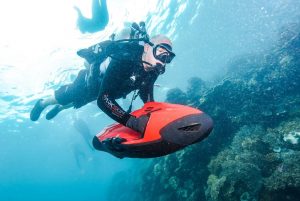
For the Amputee Diver
Equipment adaptations for the amputee diver are simpler in the idea that you already have alot of the equipment you need. Depending on where the amputation is, you may want to re configure the regulator set so it is more easy and safer to use. For example, if there is a right arm stump, it would be dangerous to put the regulator on the right side. If the regulator was to be ‘dropped’, the diver potentially could not recover it by themselves. Make sure to speak to someone who has a lot of experience in changing equipment, or if you don’t know, an equipment course or adaptive course would help to enhance your knowledge and skill.
What you may not realise is how much limbs weigh. If you was to loose some or the whole limb, the main concern when diving may by trim and buoyancy. I personally suggest double enders and D rings with weights on to solve this issue. On a BCD there are alot of places to clip weights, what i do is attach my 1kg weights to a double ender clip so i can easily clip them onto the D rings and hooks on the diver. This helps put the weight where it needs to go to make the diver feel sturdy and comfortable. If there is a right stump, then you may want to put an extra kg on that side, for example.
Another good idea is a reg necklace, seen in tech diving. Modifying equipment so that your diver can do as much as possible by themselves is a sure way to boost confidence, experience and most of all, enjoyment.
Full face masks
The full face mask is probably a doctors go to advice when it comes to disabled diving. The full face mask broadens the horizon for many people with disabilities. People with no grip, quad amputees, epilepsy and even sight impairment benefit drastically from these diving devices. Full face masks help with regulator recovery issues and mask issues and some even come with communication units so you can talk or describe what a visually impaired person is seeing.
For the Instructor
Here are a few extra things to note that could be very handy when teaching or guiding:
- Handles on tanks are perfect to gain control on turning, stopping and manoeuvring above and below the surface
- Slates or other communication devices are good underwater, specifically for people with learning difficulties or mental disabilities
- A variety of weight systems and sized tanks to best help with trim and positioning in the water
Entries and Exit modifications
One of the main logistical considerations for any disabled dive, are the entry and exits. If you are an active disabled dive Instructor or assistant, one of the items that should be in your diver tool box is a lifting net. Designed to lift considerable weight (400lb-700lb) with minimum difficulty, lifting nets are great for boats, pool edges, and getting from land to the dive site. One of the best lifting devices to get would me a medical hoist, used by nurses and medical/care giver personnel, to help transfer the elderly or mobility impaired. These nets come with more than one handle, so dependent on your size, you can still use it successfully and with ease.
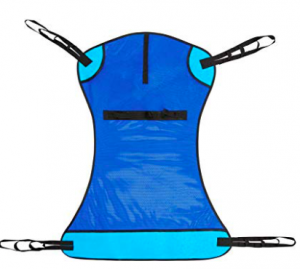
If you are in a remote location, or enjoy more out of the box thinking, ropes and the use of mats are also good go to options. Here are a few lifting and transport techniques our DDI Instructors have used.
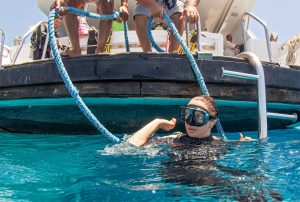
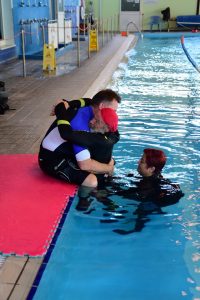
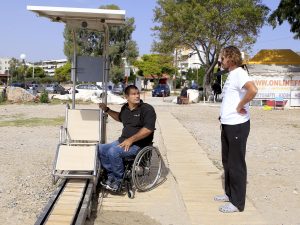
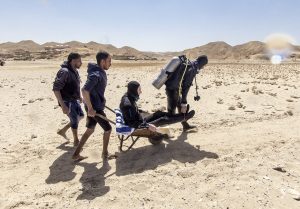
To find out more details about what could be used and to get more advice, send an email to [email protected] and enquire about the next Pro Training and Assistant Diver courses.

